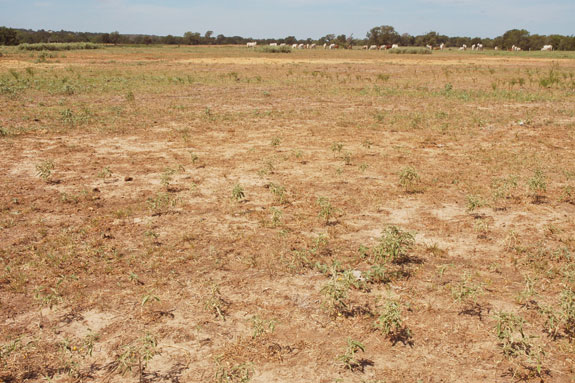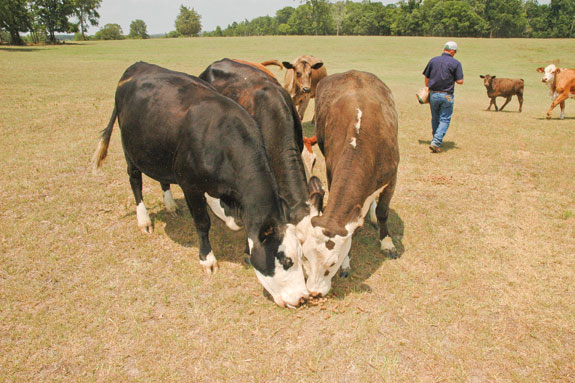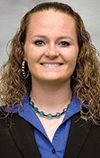Many have aggressively culled their cows, weaned calves early and are looking for pasture out of their area.
It’s a tough time to be raising cattle in the South.
“In Amarillo, we have folks that are culling herds down, and calves were early-weaned compared to what normally occurs in this area,” said Ted McCollum, professor and extension beef specialist at Texas A&M.
“We have folks that have been moving cattle out of state where they can locate grazing. We have cows that are in feedyards. We have people that are buying a lot of feed with plans to hang on to as many cows as they can.”
According to a survey done by the Texas and Southwestern Cattle Raisers Association (TSCRA), 84 percent of producers have reduced their herd size. The average reduction in herd size was 38 percent more than the three-year average of each ranch.
Setting herd priorities
Culling is usually the first step ranchers take in a drought. According to Hugh Aljoe, consultation program manager for the Noble Foundation in Oklahoma, keeping the most productive cows is best.
Young and older cows that aren’t producing well need to be the first ones to go, after the regular lame and open cull cows.
C&M Herefords, a 300-cow commercial operation in northeastern New Mexico, has done just that. “You need to consider both the input and output of each cow,” said Kyle Perez, who works at the ranch with his father, owner Michael Perez.
The ranch also runs 40 registered cattle. “In these conditions a cow must be productive. One that does not perform will end up costing you additional money.
“We didn’t necessarily cull harder, though. I don’t know if there are many cows that are gone that shouldn’t have been gone anyway. This will help to clean up our cow herd.”
Once a producer has culled the herd, the decision then must be made whether to hang on to the remaining cows or to sell out completely.
“If someone is going to make the decision to try to hold on to cows, they need to be committed to that decision,” McCollum said. “You don’t want to get halfway in and then decide you can’t do it.
You have to figure out what it is going to cost and what it will require, and do what is necessary to hold on to the cows.
You need to commit to the management that will keep the cows in good health so they can produce a calf next year and in years to come.”
Pursuit of green pastures
Producers who have held on to cows must look for pasture or bought forage, and both options have become more expensive.
Hay acreage in the Southwest dried up and hay must be shipped in from northern states.
“We are still trying to figure out what will be the best option,” said Perez, who was still weighing in October whether to ship his cattle.
“We would like to keep the registered and recipient embryo transfer cows here. It’s all about trying to find a good home that’s cost-effective enough so that you can still pay your expenses.
“Once you have put a value on your genetics that you have, and the time it took you to get where you are, it opens up options on what you can do. For those ranchers trying to pay for a group of cows and lease land, it limits your options.”
Perez currently leases the cows’ grazing land from his grandfather. However, he knows the importance of keeping the land healthy, even when it can be tempting to get as much grazing out of the land as possible.
“The question is: How hard do you want to make your cows rough it?” Perez said. “There is no sign that (the drought) is going to turn around.
Even if a guy can hold on through the winter, it doesn’t mean you are out of the woods.”
Once producers decide there’s no longer enough grass on the home ranch or current leases, they must look for a place to ship the cattle.
States such as Colorado, Nebraska, Wyoming, South Dakota and parts of Kansas may have land available, but trucking is expensive and can affect cattle.
“They have to find any pasture that is available to carry the number of cattle they have,” said Aljoe. “The closer to the home place they are, the better.
If you ship a load of cattle north, at some time they will need to be shipped back south. It’s usually cheaper to ship the cattle than it is to ship the pasture to the cattle.”

When to head elsewhere
Regardless of whether the cows are moving or the grass is, cost is a huge factor. “No one is going to do it for free,” Perez said of shipping cows.
“Then there’s the yardage cost. We have to buy the feed in that location, and you still have the lease on the home place as well. So you have double expenses as far as pasture rent goes.”
He continues, “The wear and tear on the cows can be an issue. Any time they go to another location, they need time to adjust and adapt. The first-year calf crop won’t be 100 percent of what it is from where they come from. Usually they have lighter calves at least the first year. You also take the chance of having some abort due to the trucking, and one or two always seem to get injured.”
All of these factors should be considered by ranchers who want to move their cows. However, many times ranchers disregard the management issues that also come with moving a cowherd.
“Before you send cattle to the North, know where they are going,” said Aljoe. “They need to be checked on frequently.
You need to have some references on the people you are leasing from, like a county extension agent or the banker.
Who are these people who are managing and taking care of your cattle? Producers need to go check on the cows as well.
They need to know the pasture available and if there are facilities to work the cattle. I would say you would want a written contract that is signed and notarized by someone who is respected in the county, so that you have a valid lease.”
The Vonds Ranch in Saginawa, Texas, runs 5,000 mother cows, 10,000 stocker calves and 10,000 feeder cattle. Of those, the ranch has shipped between 600 to 800 cows. However, their reason for moving cattle has more to do with the loss of water, not necessarily the grass.
“We are running out of water,” said Missy Vonds, assistant manager. “We try to run as if there is going to be a drought anyway, so we still have some feed out there for them.
Any place that has a tank or pond water has gone dry. We have had to move cattle more because of water problems than grass.”
She continued, “We have had to move some cattle to Georgia and some to Kansas. We didn’t want to go any farther north because our calving seasons would not work, since we calve in the fall and early spring. We luckily have a rancher we know in Georgia, so they are looking out for the cows there.”
The rest of the herd will stay in Texas. “The rest we are going to feed our winter feed earlier than normal,” Vonds said.
“We will have to feed some hay this winter, which normally we don’t have to do. We are just trying to maintain now and see what happens next spring. If we don’t get rain, there will be a lot deeper culling and more cattle moved.”
Not all producers are shipping the cows though. Some have decided to ship the forage instead. “There are not a whole lot of options other than to buy hay if you stay,” McCollum explained.
“What we are focusing on now is to cull what you can to minimize the amount of roughage or pasture you have to locate. Then on any material you are buying, do some shopping.
“We have quite a bit of crop residue that is being baled up and used to feed cows. My main focus is, let’s figure out a way to efficiently utilize the forage you have to buy. Minimize what the cows are wasting and know the nutritional value of the feed, so you aren’t overfeeding.”
McCollum said ranchers who have chosen to put cows in feedlots are able to minimize labor on the ranch and take advantage of easier feed.
“This can buy time for the rancher,” McCollum said. “However, they need the cows out of the feedyard before they calve.
This measure will give the grass some time to rest, with hopes that by the time the cows come back there is forage available.”

Staying in the game
No matter what a producer decides to do, the costs are going to be higher this year.
Even though feeder and cow prices are higher this year than they have ever been, the costs of everything else has also gone up and producers need to keep this in mind.
“Most people realize cattle prices are high,” Aljoe said. “If you are a small producer, it makes more sense to either sell or know you are going to put a lot of money into it. For commercial producers, it’s a different game.”
One of the problems all producers will face will be with replacement heifers. Aljoe believes keeping replacement heifers right now is not a good idea because they won’t produce a calf next year.
The auctions in the South have shown that a large percentage of heifers are being sold which, when combined with culling, has further shrunk the national herd size.
He continued, “We are going to have significantly less cattle. We will need to find cattle that fit back into this part of the world after the drought is over.
We have to learn to manage first, however. It will be late next spring before we even know what we can bring back.”
A recent TSCRA report showed that while some members will sell all their cattle, it will only be a temporary measure.
No respondents were aiming to get out for good. In fact, 11 percent of the producers surveyed actually planned to expand their herd, and 13 percent planned to expand the number of calves they sell next year.
“There are a lot of opportunities that have come with this drought for some ranchers,” said Carmen Fenton, director of public affairs for TSCRA.
“If you look at it, eventually it will rain. On the flip side, the herd will be low, and the females will be worth quite a bit of money. Those who can hang on will have a big opportunity. They will come back stronger than ever.”
“There are options for ranchers and folks are being more creative,” Fenton said. “They plan on surviving. It’s not the first drought, and won’t be the last.” ![]()
PHOTOS
TOP: Producers who are keeping their herds need to minimize waste and know the nutritional value of the feed, so overfeeding doesn’t happen.
Middle: This year’s drought has taken its toll on a Burleson County, Texas pasture.
Bottom: Gerald “Bubba” Green puts out protein cubes for cattle on part of the 200 acres he farms in Nacogdoches County. Cubes and hay prices rose throughout summer as the 2011 drought continued, forcing producers like Green to cull or liquid the herd. Photos courtesy of Texas AgriLife Extension Service







